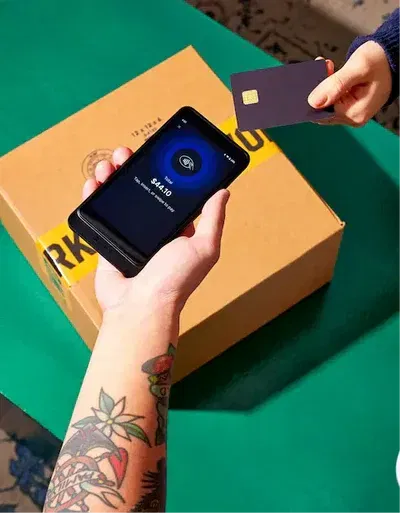Top Portfolio Idea Examples to Elevate Your Personal Brand
Introduction: Your Portfolio Speaks Before You Do
In a competitive digital world, your portfolio isn’t just a collection of your work—it’s your handshake, resume, and personal pitch all in one. Whether you’re a designer, developer, marketer, or artist, having the right portfolio idea can be the difference between being remembered and being overlooked.
So if you’re tired of blank screens and unsure of what to showcase or how to showcase it, this guide is for you. I’ll walk you through 20 creative, strategic, and practical portfolio ideas that not only reflect your talents but also help you tell a compelling story—and land that job, gig, or client.
| Section Title | Key Concepts | Detailed Information | Suggested Visuals |
|---|---|---|---|
| Introduction | Purpose of portfolios | Portfolios act as digital resumes and personal branding tools to showcase skills, work, and personality. | None |
| What Makes a Great Portfolio | Core features | Strong portfolios are curated, storytelling-driven, mobile-friendly, and include CTAs and case studies. | Portfolio homepage layout mockup |
| 20 Portfolio Ideas | Creative formats | Includes unique ideas like process-driven portfolios, timeline layouts, case study microsites, passion projects, etc. | Mockups of portfolio formats (e.g., sliders, grids, animated sections) |
| Sample Portfolio Examples | Real-world inspiration | Highlights top portfolios (e.g., Brittany Chiang, Leta Sobierajski) with their standout features. | Table or gallery of portfolio screenshots |
| Tips for Impact | Best practices | Curate top work, tell compelling stories, use CTAs, update frequently, ensure mobile responsiveness. | Checklist of portfolio dos and don’ts |
| Tools for Building | Platforms & builders | Lists tools like Webflow, Squarespace, Wix, WordPress, and Framer with their best uses. | Comparison table of builder features and pricing |
| Conclusion | Final thoughts & CTA | Reinforces that the right portfolio idea communicates value clearly and invites action. | None |
Section 1: What Makes a Great Portfolio?
Before diving into examples, let’s clarify what defines a strong portfolio. A great design portfolio or creative portfolio includes:
- Curated work that aligns with your goals
- Descriptive project breakdowns
- Case studies or process examples
- Clean, navigable layout
- Clear CTA (Contact, Hire Me, Let’s Talk)
- Optional extras: testimonials, blog, resume, video intro
Insert image: Sample portfolio homepage layout with clear CTAs and a case study preview
Section 2: 20 Portfolio Ideas to Inspire and Impress
Each portfolio idea below is tailored for specific skills and industries, but can be adapted to suit your goals.
1. Before & After Transformation Gallery
Great for: Designers, interior decorators, UX professionals
- Show your ability to improve something visually or functionally
- Use side-by-side sliders or image reveals
2. Interactive Case Study Portfolio
Great for: Developers, product designers
- Include clickable prototypes, code snippets, or animated wireframes
3. Timeline Portfolio
Great for: Illustrators, animators, video editors
- Arrange projects chronologically, showing your evolution
4. Theme-Based Portfolio
Great for: Photographers, graphic designers
- Organize by theme (e.g., Minimalist, Bold Colors, Editorial)
5. Process-Driven Portfolio
Great for: UX designers, engineers
- Highlight research, iterations, testing, and final results
6. One-Page Website Portfolio
Great for: Freelancers and consultants
- Mobile-friendly, scroll-based layout with anchor navigation
7. Dribbble-Style Gallery Grid
Great for: UI/UX designers, illustrators
- Emphasize visual impact over written content
8. Mood Board + Final Output
Great for: Brand designers, fashion stylists
- Show the inspiration and ideation behind your work
9. Video Walkthrough Portfolio
Great for: Videographers, motion designers, animators
- Embed self-narrated videos describing your work
10. Client Feedback Showcase
Great for: Copywriters, marketers
- Match each piece of work with a testimonial or result metric
11. Problem → Solution Format
Great for: Consultants, UXers, strategists
- Outline the client’s pain point and your solution process
12. Case Study Microsite Portfolio
Great for: Agencies or freelancers with big projects
- Build a mini-site or landing page per case study
13. Editorial Magazine-Style Layout
Great for: Writers, art directors, content creators
- Mimic the look and structure of a print magazine
14. Personal Passion Project Section
Great for: Anyone! Especially entry-level pros
- Add work that isn’t client-based to show drive and versatility
15. Animated Portfolio Interface
Great for: Front-end developers, creatives
- Add hover effects, interactive scrolling, and motion elements
16. Sketch to Product Journey
Great for: Product designers, engineers, architects
- Show evolution from napkin sketch to polished prototype
17. Printable Portfolio PDF Download
Great for: Job seekers, B2B professionals
- Include a PDF summary that’s easily shared or attached
18. Single Project Deep Dive
Great for: Case-heavy work, PhD students, researchers
- Walk through one large project in detail with data visuals
19. Blog-Enhanced Portfolio
Great for: SEO, content marketing, educators
- Complement work with thought pieces or tutorials
20. Landing Page Funnel Portfolio
Great for: Freelancers and service providers
- Lead-gen style portfolio that guides users to contact forms
Insert gallery: Mockups of 6–8 of the above portfolio layouts
Section 3: Sample Portfolio Examples That Nail It
Here are some best portfolio examples from real professionals:
| Name | Industry | Portfolio Highlights |
|---|---|---|
| Brittany Chiang | Front-end dev | Code + motion + dark mode switch |
| Daniel Spatzek | Creative director | Layered scroll animation |
| Matt Farley | Developer | Minimalist structure, great copy |
| Leta Sobierajski | Visual artist | Bold visuals and personality |
| Malika Favre | Illustrator | Gallery-based layout with deep color |
Insert table visual or gallery grid of real sample portfolio screenshots
Section 4: Tips to Maximize Your Portfolio’s Impact
- Curate intentionally: Show 5–7 strong projects, not 20 okay ones
- Tell the story: Context, your role, challenges, outcomes
- Update regularly: Remove old or off-brand work
- Use CTAs: “Let’s Work Together,” “Download Resume,” “Schedule a Call”
- Make it mobile-first: Responsive design is essential
Section 5: Best Tools to Build a Design Portfolio
You can bring any portfolio idea to life with these platforms:
| Tool | Type | Best For |
|---|---|---|
| Webflow | No-code builder | Custom interactive portfolios |
| Squarespace | Drag-and-drop | Simple, visual templates |
| Wix | All-in-one | Fast builds for beginners |
| WordPress | Open source | Plugin-rich, scalable options |
| Figma + Framer | Design to live | High-fidelity design + prototyping |
Insert table comparing price, ease-of-use, and flexibility across tools
1. What Is the Best Portfolio Idea for a Beginner?
If you’re just starting out, the best portfolio idea is to showcase 3–5 small projects that highlight a specific skill. You don’t need high-profile clients—personal projects, redesigns, or concept pieces work well. Include a short case study for each with a clear explanation of your role, tools used, and outcome. This approach is common in many sample of portfolio layouts designed for students or entry-level creatives.
2. What Should I Include in My Design Portfolio?
Your design portfolio should contain:
-
A clean homepage with a strong headline and CTA
-
4–6 featured projects or case studies
-
About section with a short bio and skills list
-
Contact form or downloadable resume
-
Optional blog or testimonial section
Good design portfolio examples focus more on quality than quantity and include visuals, context, and results for each project.
3. Can I Use Personal Projects in My Portfolio?
Absolutely. Personal or self-initiated projects are often what make the best design portfolios stand out. They demonstrate creativity, initiative, and passion. If you’re short on client work, redesign a well-known brand, create a themed concept (e.g., eco-friendly packaging), or document a mock case study. Many sample portfolio examples include both real and personal work.
4. How Many Projects Should Be in a Portfolio?
The ideal number of projects in your portfolio is 5 to 8. This keeps the viewer engaged while providing enough range to show your versatility. Choose your strongest and most relevant work and make sure each project includes a description, tools used, and outcome. Even the best portfolio examples avoid overwhelming viewers with too many entries.
5. What Format Should a Portfolio Be In—PDF or Website?
A website portfolio is best for digital visibility and SEO, while a PDF portfolio is excellent for print applications and direct submissions. Ideally, you should have both. Use your website as your main hub and offer a downloadable PDF version for quick sharing. Some of the best design portfolios use platforms like Webflow, Behance, or a custom domain for online visibility.
6. What’s the Best Platform to Build a Design Portfolio Website?
Here are popular platforms to build a design portfolio:
-
Webflow – Highly customizable with animation features
-
Squarespace – Beautiful templates for visual creators
-
Wix – Beginner-friendly with drag-and-drop functionality
-
Behance – Free and widely used among creatives
-
WordPress – Flexible, plugin-rich CMS for scalability
Each platform supports various portfolio idea formats—from single project deep dives to grid-style sample layouts.
7. What Makes a Portfolio Stand Out to Employers or Clients?
A standout portfolio includes:
-
Clear storytelling and structure
-
Well-documented process, not just visuals
-
Consistency in layout and branding
-
Testimonials or measurable outcomes (ROI, engagement rates)
-
A clean, responsive design
When you look at the best portfolio examples, they all provide context, clarity, and personality—not just a slideshow of pretty work.
8. What Should I Write in a Project Description?
Your project description should follow this structure:
-
The challenge: What problem were you solving?
-
Your role: Were you the designer, strategist, developer, etc.?
-
The process: Sketches, wireframes, tools, decisions made
-
The result: Metrics, client feedback, or final product image
This format makes even basic projects look professional—seen often in sample portfolio examples online.
9. How Can I Make My Portfolio More Engaging?
To enhance engagement:
-
Use hover effects and animated transitions
-
Incorporate case studies with scroll reveals
-
Add a short video walkthrough or intro reel
-
Use call-to-action buttons like “See Project” or “Hire Me”
-
Include an interactive prototype (especially for UX portfolios)
Interactive design portfolio features help viewers remember your work.
10. Can I Include Group Projects in My Portfolio?
Yes, but clarify your contribution. Many sample of portfolio templates include multi-person projects. Just state your role explicitly—e.g., “I handled wireframing and UI design, while my teammate worked on branding.” This shows collaboration skills and honesty.
11. Do I Need a Separate Portfolio for Each Skill (e.g., UX and Graphic Design)?
If your skills are closely related, one portfolio idea is to create separate sections (tabs or filters) on the same site. For example:
-
UX/UI
-
Branding
-
Illustration
If your work spans vastly different fields (e.g., graphic design and copywriting), two separate portfolios may be more effective to avoid confusing visitors.
12. What Are Some Creative Portfolio Ideas for Developers?
Great portfolio ideas for developers include:
-
A themed coding playground
-
Interactive resume with animations
-
Problem-solution showcase (e.g., GitHub-linked case studies)
-
Tutorials blog or code pen integrations
-
Technical stack visualizer
Developer design portfolios can be as engaging as creative portfolios with the right UX and interactivity.
13. How Often Should I Update My Portfolio?
Update your portfolio every 6–12 months or whenever:
-
You complete a new project
-
You learn a new skill
-
Your design aesthetic evolves
-
You start job hunting or freelancing
Staying updated shows you’re active and relevant, a key trait in all best portfolio examples.
14. Should I Include My Resume in My Portfolio?
Yes. You can:
-
Link to a downloadable PDF resume
-
Create a dedicated “Resume” page
-
Embed your resume as part of your About page
Many sample portfolio examples pair resumes with CTAs like “Let’s Talk” or “Download Resume.”
15. Where Can I Find the Best Portfolio Examples for Inspiration?
Try these sources:
-
Awwwards.com – Portfolio design inspiration
-
Behance – Real portfolios across categories
-
Dribbble – UI/UX and graphic portfolios
-
Pinterest – Mood boards for layout ideas
-
One Page Love – Single-page portfolio templates
Studying sample portfolio examples from these platforms can help refine your style and structure.
Conclusion: Your Portfolio is Your Voice—Make It Echo
A great portfolio does more than show what you’ve done—it tells the world who you are, what you care about, and why you’re the one to hire. With the right portfolio idea, you can turn static samples into storytelling assets.
So whether you’re revamping your current portfolio or building your very first one, try one (or more) of the ideas above. Your future clients, recruiters, or collaborators will thank you.
Now it’s your turn: Which portfolio idea are you most excited to try? Let us know in the comments or tag us when your portfolio goes live!
Are Wiki Backlinks Good? The Truth About Wikipedia Links for SEO




